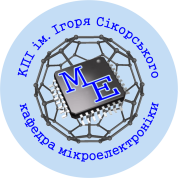Useful information for entrants
A young person is always faced with two very important questions after successfully graduating from school:
Where to go to study?
Where to work after graduation?
The answers to these questions and the right choice of future profession and obtaining the appropriate qualification depend not only on the person, his level of training, preferences and abilities, but also on the time, country or city in which the school is located.
You are reading these pages on the website of one of the oldest universities in Europe – the National Technical University of Ukraine “Igor Sikorsky Kyiv Polytechnic Institute”, which has a special decree preserving the historical name “Kyiv Polytechnic Institute” for outstanding services to the state.
Micro- and nanoelectronics is the general direction of development of modern electronics, which, in turn, determines the accelerated development of society as a whole. This is one of the few areas of production and scientific and technical activities of man, in which the growth of technical indicators, product quality and economic efficiency is accompanied by a decrease in its cost. Thanks to the achievements of microelectronics there is a significant progress in radio electronics, computer technology, information technology, television, video and audio technology, mobile communications, telecommunications networks, measuring technology and many other fields of science and techniques.
Today, progress is being made by increasing the number of elements in chips (integration) and reducing the size of the elements themselves (microminiaturization). In the future this approach of only quantitative changes will inevitably lead to slowing down the pace of electronics. Given the likelihood of such crises and to reduce their impact on the development of microelectronics, training at the department is based on a deep mastery of basic sciences: physics, mathematics and computer science, which allows graduates to work in industry and engage in research. Creation of the newest, competitive products is possible not only at application of modern technologies and design methods, but with use of ideas functional electronics, which are based not only on microcircuit principles, but also on physical phenomena and effects in a solid. These effects are used to make solid-state lasers, optoelectronic means of communication and holographic systems for processing ultra-large arrays of information, piezoelectric and magnetic functional elements, sensors of various electrical and non-electrical quantities, etc.
We are witnessing an unprecedented growth in the production of micro- and nanoelectronics and its successful application in various fields of human activity. Therefore, the work of professionals with broad and fundamental training is becoming more prestigious and the need for specialists in this area is growing significantly and will continue to grow.
